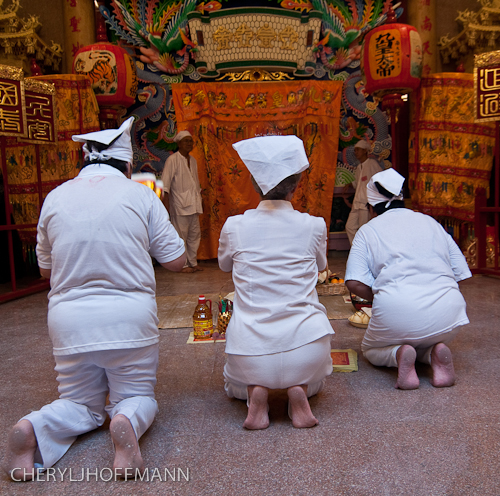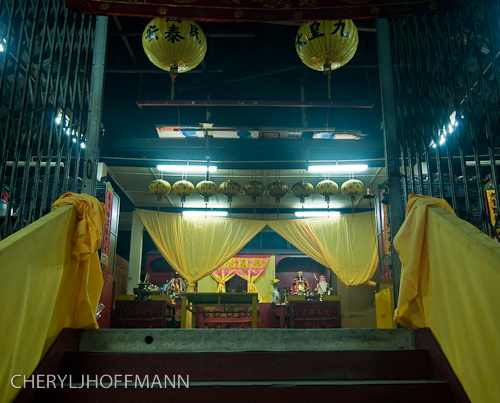The Yellow Curtain
I dreamt last night of yellow and streaks of light in the night sky and so am glad of a day of distraction from the temple to give my imagination a rest! A couple of things happened yesterday to prompt my thoughts and give rise to this morning’s blog. Someone showed me some photos of the evening sky on October 3rd with clouds reflecting a brilliant light in the low sun. I was told that the lines across the sky were the heavenly spirits coming to the festival. Interesting. It reminded me of the light last week when I was alone at the temple in the rain at sunset. Here’s the photo I took then. Now you know why I need a day off!

And then yesterday again, a young man in the temple asked me if I knew the story of the Festival. I listened carefully as he told me the tale, according to his mother, of nine special humans (maybe brothers) who did good deeds and were so popular with the people that the jealous Emperor (of a long time ago) had them decapitated. Their death so upset the people that they began worshiping the nine brothers as if they were Emperors. When I asked him if he knew what was behind the yellow curtain he told me that he had no idea, but it must be the Emperor Gods.

I have asked a lot of visitors to the temple about the story behind the festival and there are so many variations – from blank stares, shrugs, and “We Pray to the God”, to more elaborate stories of headless heroes, magic musicians, sons of the Mother of Heaven, and of the stars in the sky. It really doesn’t matter what people believe, just that they believe. Their purpose in the temple is the pursuit of health, happiness and prosperity and it is personal and with good intentions.
Here is the myth that suits me best, probably because it is based on the geographical dissemination of popular culture. It comes from research by Cheu Hock Tong at the National University in Singapore. There is a link to the whole article in the sidebar, left. According to Cheu, the Ampang mythology ties in to the existence of a Hong Secret Society formed to overthrow the Qing and restore the Ming. Cheu writes “A Hong member by the name of Wan Yunlong was killed in battle…on the ninth day of the ninth month, 1783. His followers fled to Thailand, where, rebuffed by the Thai authorities, they moved south to the Penang area. Some Hong members settled in Ampang where they worked as planters and farmers and organized a clandestine movement to overthrow the Qing…”

I like this interpretation because it helps me understand the connections between the important Nine Emperor Gods Temples in Thailand and Penang and Ampang. But here’s where it gets really good and ties back to the yellow curtain. In Ampang, apparently, when the secret society was meeting (must have been in the 1860’s) the police arrived to investigate the gathering. This is what Cheu writes, “The group replied that it was praying for peace and protection. Seeing that there was only an incense urn and not image of any sort, the police said, ‘There is not deity here – what are you worshiping?’ One quick-witted soul pointed at the incense urn and replied ‘This is the god we worship!’…This accounts for the use of an incense urn to represent the Nine Emperor Gods during the festival.” Now, that’s a good story!!
Sooooooo, that MIGHT explain what’s behind the curtain! It’s all part of the secret and the wonderful aura of mystery that surrounds the Nine Emperor Gods Festival. Worshipers pray in the direction of the curtain and give joss sticks to the guardians of the altar to place in the urn. Worshipers never see the Emperor but they believe he is there. Blind faith and it works for them.

Next blog – let’s think about more yellow at the festival. Here’s a teaser.

